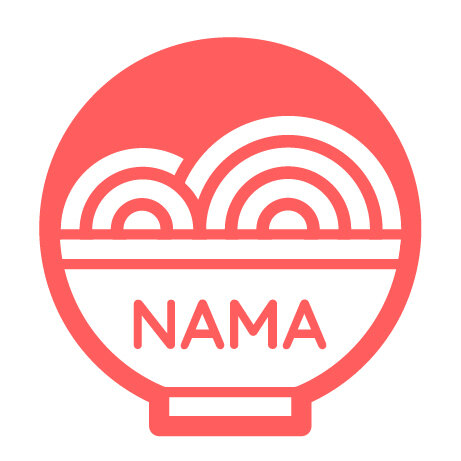Kamatama Chukasoba Napoleonken / 釜玉中華そば ナポレオン軒 - Toritsu-Daigaku
Kamatama Chukasoba Napoleon-ken (釜玉中華そば ナポレオン軒) is a rising star in the Tokyo ramen scene and has just won the second place in the top newcomer shop in the latest Ramen Walker 2024 edition.
Front of ramen shop Kamatama Chukasoba Napoleonken
Opened in 2022, Napoleon-ken serves a style of ramen called Kamatama that is quite unique and resembles more a udon dish than any ramen dish. The shop has been such a breakthrough hit that just one year later, they already have 4 shops open with the same name and ramen style. If you are wondering about the name, you will indeed see a small Napoleon on some of the signs and printouts in the shop. Other than that, I don’t think there is any real connection to France or the name-giving French guy.
Full menu of Napoleonken on their vending machine. Even regular ramen available at the bottom.
The menu offers a broad variety of items, but is mainly focused on their “Kamatama Chukasoba” mazesoba. The main versions you see are in the first 3 rows:
Shoyu regular and shoyu rich
Shoyu regular and shoyu rich with spicy negi
Shio regular and shio rich
Below that you will find topping options for fried tofu, ajitama egg and more negi. The broad button in the second row from the bottom on the left is very important, since it gives you the kaedama, which I explain further down. The right broad bottom gives you 2 pieces of inari sushi. At the bottom, there are also options for regular ramen bowls with soup, which were inactive when I went.
Rich Kamatama Chukasoba bowl at Napoleonken. A plentiful experience!
The basic dish consists of noodles, a shoyu tare and an egg or egg yolk. You are supposed to mix it all together mazesoba style, which then turns it into an almost pasta style dish.
The toppings all greatly add to the experience.
What really makes this dish is the absolutely incredible noodles. They are thick, wavy, chewy and overall just an absolute pleasure to eat. They somewhat remind me of Jiro style noodles, but a bit more flat and wavy.
Thick and wavy noodles for the mazesoba bowls at Napoleonken. The star of the show!
After mixing the egg and the shoyu tare, they are very nicely coated with a flavorful sauce, which can then be modified with the more than ten different things on the counter, including fresh ginger, garlic, pepper, shiitake vinegar, katsuobushi powder, chili oil, super spicy nira garlic chives and much much more. They even offer cheese as free topping, but you need to ask the staff for it, since they keep it in the fridge.
Pork chashu at Napoleonken. A bit on the lean and drier side, but super tender.
The toppings that already come on the bowl also fit the bowl quite well. the chashu looks a bit dry, but is actually more juicy than it looks.
Semi hard boiled ajitama egg at Napoleonken.
The egg is on the semi-hard boiled side. I have not checked other pictures to see if this is the style that they are aiming for. I thought that it was not terrible, but proper soft boiled ajitama would have bee preferable.
The kaedama comes with hard straight low hydration noodles in a strong niboshi soup.
Another must get is their kaedama, which is another serving of noodles that is served together with an impactful niboshi soup. These noodles are completely different, more similar to Hakata style thin and low hydration noodles that are served al dente. You are supposed to add this to the "leftovers" of your main bowl, once you are done with you noodles, but you can also enjoy it as it is. I saw that the thought behind this kaedama is that adding it to your main bowl actually transforms it from mazesoba to ramen. Also, if you leave out the chashu, the original mazesoba is vegetarian, animal product (not counting the egg) is only added through the kaedama and the chashu.
With its versatility, I can see myself coming back again and again to this ramen shop to try various topping mixes. I will definitely be back and I can understand how this shop made it into the top rankings right from the start.
In the meantime, there are 4 locations of Napoleon-ken, so it has become quite easy to try their incredible mazesoba.



















